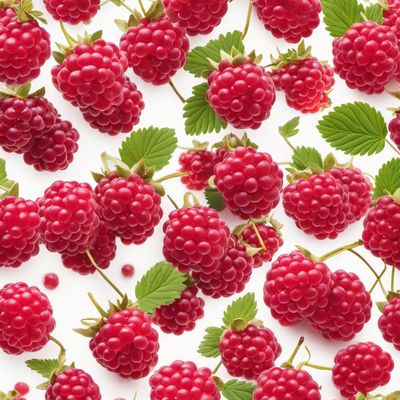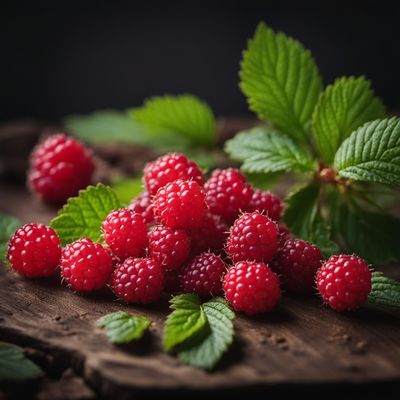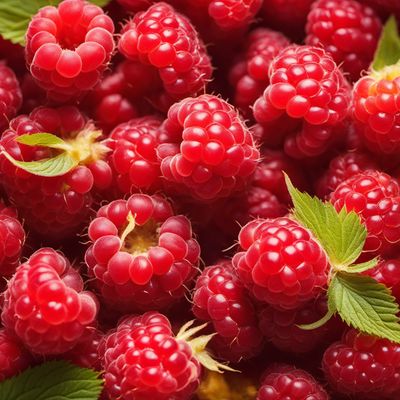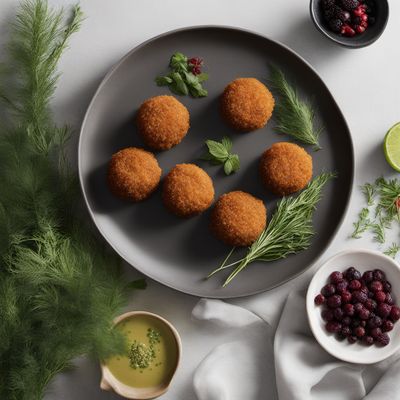
Ingredient
Arctic brambles
The Arctic Delicacy: Exploring the Unique Flavors of Arctic Brambles
Arctic brambles, also known as Arctic raspberries or Rubus arcticus, are small, round berries that grow in the Arctic regions of Europe, Asia, and North America. They have a deep red color and are covered in tiny hairs, giving them a velvety texture. The berries are known for their sweet and tangy taste, with a subtle hint of floral notes. Their texture is soft and juicy, similar to traditional raspberries, but with a slightly firmer bite. Arctic brambles are often smaller in size compared to other raspberries, but their flavor is incredibly concentrated, making them a prized ingredient in culinary creations.
Origins and history
Arctic brambles have a rich history in Arctic cultures, where they have been foraged and enjoyed for centuries. Native to the Arctic regions, these berries have been a vital food source for indigenous communities, providing essential nutrients in harsh climates. Traditionally, Arctic brambles were used in various ways, including as a natural remedy for ailments and as a flavoring agent in traditional dishes. Today, they continue to be celebrated for their unique flavors and are gaining popularity in the culinary world.
Nutritional information
Arctic brambles are a nutritional powerhouse, packed with antioxidants, vitamins C and E, and dietary fiber. They are low in calories, with approximately 40 calories per 100 grams.
Allergens
There are no known allergens associated with Arctic brambles.
How to select
When selecting Arctic brambles, look for berries that are plump, firm, and brightly colored. Avoid berries that are mushy or have moldy spots. The hairs on the berries should be intact and not easily falling off. Opt for organic or wild-harvested berries whenever possible to ensure the highest quality and flavor.
Storage recommendations
To maintain the freshness and quality of Arctic brambles, store them in a shallow container lined with paper towels to absorb excess moisture. Keep them refrigerated and consume within a few days for the best flavor. Alternatively, you can freeze the berries for longer-term storage.
How to produce
Arctic brambles are best left to be grown in their natural habitat due to their specific requirements. However, if you have access to a cold climate with well-drained soil, you can attempt to grow them from seeds or transplants. Ensure they receive adequate sunlight and water, and protect them from extreme temperatures.
Preparation tips
Arctic brambles can be enjoyed fresh, added to salads, desserts, or used in jams, jellies, and sauces. They pair well with both sweet and savory dishes, adding a burst of flavor and vibrant color. To prepare, gently rinse the berries under cold water and pat them dry. Remove any stems or leaves before incorporating them into your desired recipe.
Culinary uses
Arctic brambles are commonly used in desserts such as pies, tarts, and ice creams. They can also be used to make flavorful sauces for savory dishes like roasted meats or added to salads for a refreshing twist. Their unique flavor profile makes them a versatile ingredient in both sweet and savory culinary creations.
Availability
Arctic brambles are commonly found in Arctic regions of Europe, Asia, and North America, including countries like Finland, Sweden, Norway, Russia, Canada, and Alaska.
More ingredients from this category

Nectar raspberries
The Luscious Delight: Exploring the World of Nectar Raspberries

Korean raspberries
The Tangy Gems

Black raspberries
Jewels of the Berry World

Korean black raspberries
The Nutty Delights: Pistachios and Their Kin

Wineberries
The Jewel of Summer: Wineberries

Raspberries (red and yellow)
"Nature's Sweet and Tangy Gems: Exploring the Vibrant World of Raspberries"
